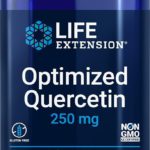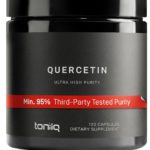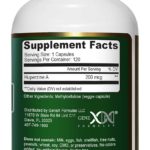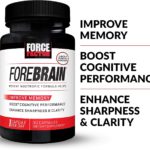Curiosity is piqued when it comes to the wonders of Palmitoylethanolamide (PEA). This naturally occurring fatty acid amide, belonging to the family of endocannabinoids, has attracted attention for its potential therapeutic properties. Synthesized in various tissues of the body, PEA is thought to play a role in modulating the immune response and promoting homeostasis, making it an intriguing compound to explore for managing chronic pain and inflammation. Join us as we delve into the question: What is Palmitoylethanolamide good for?
Overview of Palmitoylethanolamide (PEA)
Palmitoylethanolamide (PEA) is a naturally occurring fatty acid amide that belongs to the family of endocannabinoids. It was first isolated from soybean lecithin in the 1950s and has since gained attention for its potential therapeutic properties. PEA is synthesized in various tissues of the body, especially in response to inflammation and pain, and is thought to play a role in modulating the immune response and promoting homeostasis.
PEA is often referred to as a “nutraceutical” or a “dietary supplement” due to its status as a naturally occurring compound. It is not considered a traditional pharmaceutical drug, but rather a compound that might have health benefits, especially in the context of managing chronic pain and inflammation.
Definition and structure of PEA
Palmitoylethanolamide (PEA) is a lipid molecule that consists of a palmitic acid moiety bound to an ethanolamine molecule. It is structurally similar to other endocannabinoids but acts through different mechanisms. PEA is primarily synthesized and released in response to cellular stress or injury, particularly in tissues involved in immune responses and pain transmission.

Sources of PEA
PEA is found in various natural sources, both plant-based and animal-based. Some dietary sources of PEA include egg yolks, soy products, peanuts, and certain kinds of meat. Additionally, PEA can also be produced within the body as a result of enzymatic reactions in response to inflammation or cellular stress.
Mechanisms of action of PEA
PEA exerts its effects by interacting with several cellular targets involved in pain, inflammation, and immune responses. One of the key mechanisms of action is through its modulation of the endocannabinoid system (ECS). PEA acts as an agonist of the peroxisome proliferator-activated receptor-alpha (PPAR-α), which helps regulate gene expression related to inflammation and pain. It also inhibits the activation of mast cells, thereby reducing the release of pro-inflammatory mediators.
Furthermore, PEA has been shown to influence the activity of ion channels, including transient receptor potential (TRP) channels, which play a role in pain perception. By modulating these channels, PEA can help reduce pain transmission and hypersensitivity.

Endocannabinoid system and PEA
The endocannabinoid system (ECS) is a complex network of receptors and endocannabinoids that play a crucial role in maintaining homeostasis within the body. The ECS consists of two main types of receptors, known as cannabinoid receptor type 1 (CB1) and cannabinoid receptor type 2 (CB2), as well as various endocannabinoids and enzymes involved in their synthesis and degradation.
PEA interacts with the ECS by binding to CB1 and CB2 receptors, although its affinity for these receptors is relatively low. Instead, PEA primarily acts through other receptors, such as PPAR-α, to regulate inflammation and pain. This unique mechanism of action distinguishes PEA from other endocannabinoids and contributes to its potential therapeutic applications.
Potential Therapeutic Applications
PEA for chronic pain management
Chronic pain is a common and debilitating condition that affects millions of people worldwide. Conventional painkillers, such as opioids, have limitations and can be associated with various side effects and risks. PEA has shown promise as an alternative or complementary approach to pain management.
PEA’s anti-inflammatory and analgesic properties make it an attractive option for treating chronic pain conditions. By modulating the activity of immune cells and dampening the release of pro-inflammatory mediators, PEA can help alleviate pain associated with conditions such as osteoarthritis, fibromyalgia, and neuropathic pain.
PEA for inflammatory conditions
Inflammation is a natural response of the immune system to injury or infection. However, chronic inflammation can contribute to the development of various diseases, including autoimmune disorders and chronic inflammatory conditions. PEA has been shown to exert anti-inflammatory effects by reducing the activation of immune cells and the production of inflammatory molecules.
Studies have demonstrated the efficacy of PEA in reducing inflammation and symptoms associated with conditions such as irritable bowel syndrome (IBS), multiple sclerosis (MS), and asthma. Its ability to modulate the immune response and inhibit the release of pro-inflammatory cytokines makes PEA a potential therapeutic option for managing these inflammatory conditions.
PEA for neuropathic pain
Neuropathic pain is a type of chronic pain that is caused by nerve damage or dysfunction. It is often described as a shooting or burning pain that is difficult to treat effectively. PEA has been shown to have neuroprotective effects and can help alleviate neuropathic pain.
PEA’s ability to modulate the activity of ion channels, such as TRP channels, plays a crucial role in reducing neuropathic pain. By inhibiting the hypersensitivity of nerve fibers and reducing the transmission of pain signals, PEA offers a potential solution for individuals suffering from neuropathic pain conditions, including diabetic neuropathy and post-herpetic neuralgia.
PEA for neurodegenerative diseases
Neurodegenerative diseases, such as Alzheimer’s disease and Parkinson’s disease, are characterized by the progressive loss of nerve cells in the brain. These conditions often involve chronic inflammation and oxidative stress, which contribute to the degenerative process. PEA’s anti-inflammatory and neuroprotective properties make it a promising therapeutic agent for neurodegenerative diseases.
Research has shown that PEA can reduce inflammation, oxidative stress, and neuronal damage associated with neurodegenerative diseases. It can also enhance the clearance of toxic protein aggregates, such as amyloid-beta plaques in Alzheimer’s disease. These findings suggest that PEA may have potential therapeutic applications in the prevention and treatment of neurodegenerative diseases.
PEA for immune system modulation
The immune system plays a vital role in defending the body against infections, but dysregulation of the immune response can lead to chronic inflammatory conditions or autoimmune disorders. PEA has been found to modulate the immune system and promote immune homeostasis.
By inhibiting the activation of immune cells and reducing the release of pro-inflammatory cytokines, PEA can help restore immune balance and prevent excessive inflammation. This immune-modulating property of PEA may have implications for conditions such as rheumatoid arthritis, psoriasis, and inflammatory bowel disease.

Clinical Studies and Research
Overview of clinical studies
Numerous clinical studies have been conducted to evaluate the therapeutic potential of PEA in various conditions. These studies have investigated its efficacy, safety profile, and mechanisms of action. The results of these studies provide valuable insights into the potential applications of PEA in the medical field.
Effectiveness of PEA in pain management
Clinical trials have demonstrated the effectiveness of PEA in alleviating chronic pain. For example, a randomized controlled trial involving individuals with chronic lower back pain found that PEA significantly reduced pain intensity and improved functional status compared to a placebo.
Similarly, studies evaluating the use of PEA in other pain conditions, such as neuropathic pain and fibromyalgia, have shown promising results. PEA’s ability to modulate the endocannabinoid system, reduce inflammation, and inhibit pain transmission contributes to its efficacy in pain management.
Efficacy of PEA in inflammatory conditions
Numerous clinical trials have explored the efficacy of PEA in reducing inflammation and symptoms associated with various inflammatory conditions. A systematic review of studies involving individuals with chronic inflammatory disorders, such as ulcerative colitis and eosinophilic esophagitis, concluded that PEA supplementation led to significant improvements in symptoms and reduced the need for other medications.
PEA’s anti-inflammatory effects, combined with its favorable safety profile, make it an attractive therapeutic option for individuals with chronic inflammatory conditions.
Neuroprotective effects of PEA
Several preclinical and clinical studies have investigated the neuroprotective effects of PEA in neurodegenerative diseases. These studies have demonstrated PEA’s ability to reduce inflammation, oxidative stress, and neuronal damage in animal models of Alzheimer’s disease, Parkinson’s disease, and multiple sclerosis.
Clinical trials evaluating the use of PEA in individuals with Alzheimer’s disease have shown promising results. PEA supplementation was found to improve cognitive function and decrease the progression of the disease. These findings highlight the potential of PEA as a neuroprotective agent in the treatment of neurodegenerative diseases.
PEA and immune system regulation
Clinical studies have also explored the role of PEA in modulating the immune system and its potential applications in autoimmune disorders and chronic inflammatory conditions. A randomized controlled trial involving individuals with multiple sclerosis demonstrated that PEA supplementation reduced the frequency and severity of relapses and improved overall disease status.
Furthermore, studies evaluating the use of PEA in conditions such as rheumatoid arthritis and psoriasis have shown promising results. PEA’s ability to restore immune balance and reduce inflammation contributes to its efficacy in immune system modulation.
Dosage and Administration
Recommended dosage of PEA
The recommended dosage of PEA varies depending on the condition being treated. For chronic pain management, a typical dosage range is between 300-1200 mg per day, divided into multiple doses. For inflammatory conditions and neurodegenerative diseases, dosages ranging from 300-1800 mg per day have been used in clinical studies.
It is important to note that individual responses to PEA may vary, and it is recommended to start with a lower dosage and gradually increase if necessary. It is advisable to consult with a healthcare professional for personalized dosage recommendations.
Methods of administration
PEA is available in various forms, including capsules, powders, and creams. Oral supplementation is the most common route of administration, with capsules being the preferred form. PEA can be taken with or without food, although taking it with food may improve absorption.
For topical applications, PEA creams or gels can be applied directly to the affected area to provide localized relief. The dosage and administration method may vary depending on the specific product and the recommendations provided by the manufacturer.
Potential side effects and precautions
PEA is generally well-tolerated and has a favorable safety profile. Clinical studies have reported minimal side effects, with the most common being mild gastrointestinal symptoms such as nausea or stomach discomfort. These side effects are typically transient and resolve on their own.
There are no known drug interactions with PEA, and it can be safely used alongside other medications or supplements. However, it is always advisable to consult with a healthcare professional before starting any new dietary supplement, especially for individuals with underlying medical conditions or those taking other medications.
PEA vs. Traditional Pharmaceuticals
Comparison of PEA and traditional painkillers
PEA offers several advantages over traditional painkillers, such as opioids and nonsteroidal anti-inflammatory drugs (NSAIDs). Unlike opioids, PEA does not cause dependence or respiratory depression, making it a safer option for long-term use. It also does not carry the risk of gastrointestinal bleeding or cardiovascular complications associated with NSAIDs.
Furthermore, PEA’s pleiotropic mechanisms of action, including its modulation of the endocannabinoid system and its anti-inflammatory effects, make it a more comprehensive solution for pain management compared to traditional painkillers that primarily target pain perception.
Advantages and disadvantages of PEA
PEA has several advantages as a therapeutic agent. Its natural origin and favorable safety profile make it an attractive alternative to pharmaceutical drugs. PEA’s ability to reduce pain, inflammation, and neurodegenerative processes provides a multifaceted approach to managing various conditions.
However, there are some limitations to using PEA. Its effectiveness may vary among individuals, and not everyone may experience significant benefits. Additionally, PEA may take time to exert its effects, and regular usage is often required to maintain its therapeutic benefits.
Safety and Regulation
Safety profile of PEA
PEA has a favorable safety profile and has been well-tolerated in clinical studies. Minimal side effects, such as gastrointestinal symptoms, have been reported and are typically mild and transient. PEA is generally considered safe for long-term use when taken at recommended dosages.
Adverse effects and contraindications
There are currently no known contraindications for the use of PEA. However, individuals with hypersensitivity or allergies to PEA or any of its components should avoid its use. Pregnant or breastfeeding women should consult with a healthcare professional before using PEA.
Regulatory status of PEA as a dietary supplement
In many countries, including the United States, PEA is classified as a dietary supplement rather than a pharmaceutical drug. This means that it is available over-the-counter and does not require a prescription for purchase. However, regulations may vary depending on the country, and it is important to consult local regulations and guidelines regarding the sale and usage of PEA.
PEA in Combination Therapies
PEA and other natural compounds
PEA can be used in combination with other natural compounds to enhance its therapeutic effects. For example, combining PEA with other anti-inflammatory agents, such as curcumin or omega-3 fatty acids, may have synergistic effects and provide a more comprehensive approach to managing inflammation and pain.
Additionally, combining PEA with other natural compounds that target specific pathways involved in neuroprotection or immune modulation may further enhance its efficacy in the treatment of specific conditions.
Synergistic effects of PEA with traditional medications
PEA can also be used in combination with traditional medications to augment their effects or reduce side effects. For example, combining PEA with opioids may allow for lower opioid doses while still maintaining effective pain relief. This can help reduce the risk of opioid-related side effects and improve overall treatment outcomes.
It is important to note that combining PEA with medications or other compounds should be done under the guidance of a healthcare professional to ensure safety and optimize therapeutic benefits.
Future Directions and Research
Emerging studies on PEA
Research on PEA is ongoing, with emerging studies exploring its potential applications in various fields. Some areas of interest include the role of PEA in cancer treatment, its effects on gut health and microbiota, and its potential as a neuroprotective agent in traumatic brain injury.
As scientific understanding of PEA continues to expand, further research will provide valuable insights into its mechanisms of action and potential therapeutic applications.
Investigation of novel applications
In addition to its established therapeutic applications, researchers are investigating novel applications of PEA. For example, studies are exploring its potential use in managing psychiatric disorders, such as anxiety and depression, as well as its effects on sleep quality and cognition.
These investigations aim to broaden the scope of PEA’s applications and provide new avenues for therapeutic interventions in various health conditions.
Improved formulations and delivery methods
Researchers are also focusing on developing improved formulations and delivery methods for PEA to enhance its bioavailability and efficacy. Novel techniques, such as nanoemulsions and liposomal encapsulation, aim to improve PEA’s absorption and tissue penetration, leading to more targeted and effective therapeutic interventions.
These advancements in formulation and delivery will contribute to the optimization of PEA-based therapies and improve patient outcomes.
Conclusion
Palmitoylethanolamide (PEA) is a naturally occurring fatty acid amide that holds promise for its therapeutic applications in managing chronic pain, inflammation, and neurodegenerative diseases. Its unique mechanisms of action, including modulation of the endocannabinoid system and anti-inflammatory effects, make it a multifaceted therapeutic option.
PEA’s favorable safety profile and potential as an alternative to traditional pharmaceuticals make it an attractive option for individuals seeking natural approaches to managing their health conditions. Ongoing research and clinical studies continue to uncover new insights into the efficacy and potential applications of PEA, highlighting its role as a promising compound in the field of therapeutics.







